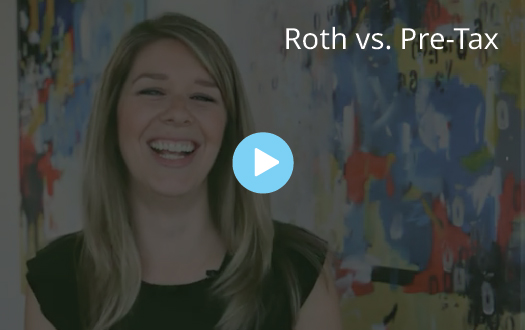Roth or Pre-Tax?


Your retirement plan may offer you the flexibility to contribute as pre-tax, Roth, or as a combination of the two types, up to the IRS contribution limit for the year. Below, we’ve broken down who might find each option appealing:
Who might find Roth attractive? People in a lower tax bracket now might prefer Roth because it allows them to lock in today’s tax rate on their plan contributions. If taxes are higher at the point they retire, they will have saved money. In addition, those who are far from retirement have time for earnings to compound, which are generally tax-free* in the Roth source. To determine if Roth might be right for you, ask yourself:
- Do I have more than 10 years to work before I retire?
- Do I think my taxes will increase in the future?
- Can I afford to reduce my current take home pay now to save on taxes later?
- Can I wait at least 5 years before I need the access the money?
Who might prefer pre-tax? Savers who are concerned with how their contribution will impact their take-home pay or those paying taxes at a higher rate might prefer pre-tax, since it will reduce the amount of taxes paid for the current year. A pre-tax retirement contribution lessens your taxable income for the year, saving you money in your current year’s taxes. However, you do have to then pay income taxes on that money (and any applicable investment earnings) at the point it’s distributed as cash. To determine if pre-tax is right for you, you may want to ask yourself:
- Do I need to access the money within the next 5 years?
- Do I think my taxes will be reduced in the future?
- Are there strains on my current income (like debt), making it challenging for me to contribute to the plan?
Combining both options: Some savers like the option of contributing some money as pre-tax and some as Roth because this can allow for strategic tax planning in retirement. You would have both pre-tax and Roth assets in your account to draw from later.
This is general information intended to help you evaluate your options. You should seek the advice of a tax professional for guidance specific to your situation.
*Roth withdrawals are tax-free if your distribution is qualified and you have fulfilled the IRS 5-year rule. Otherwise, you may be taxed on the earnings portion of your account.
Educational use only.



